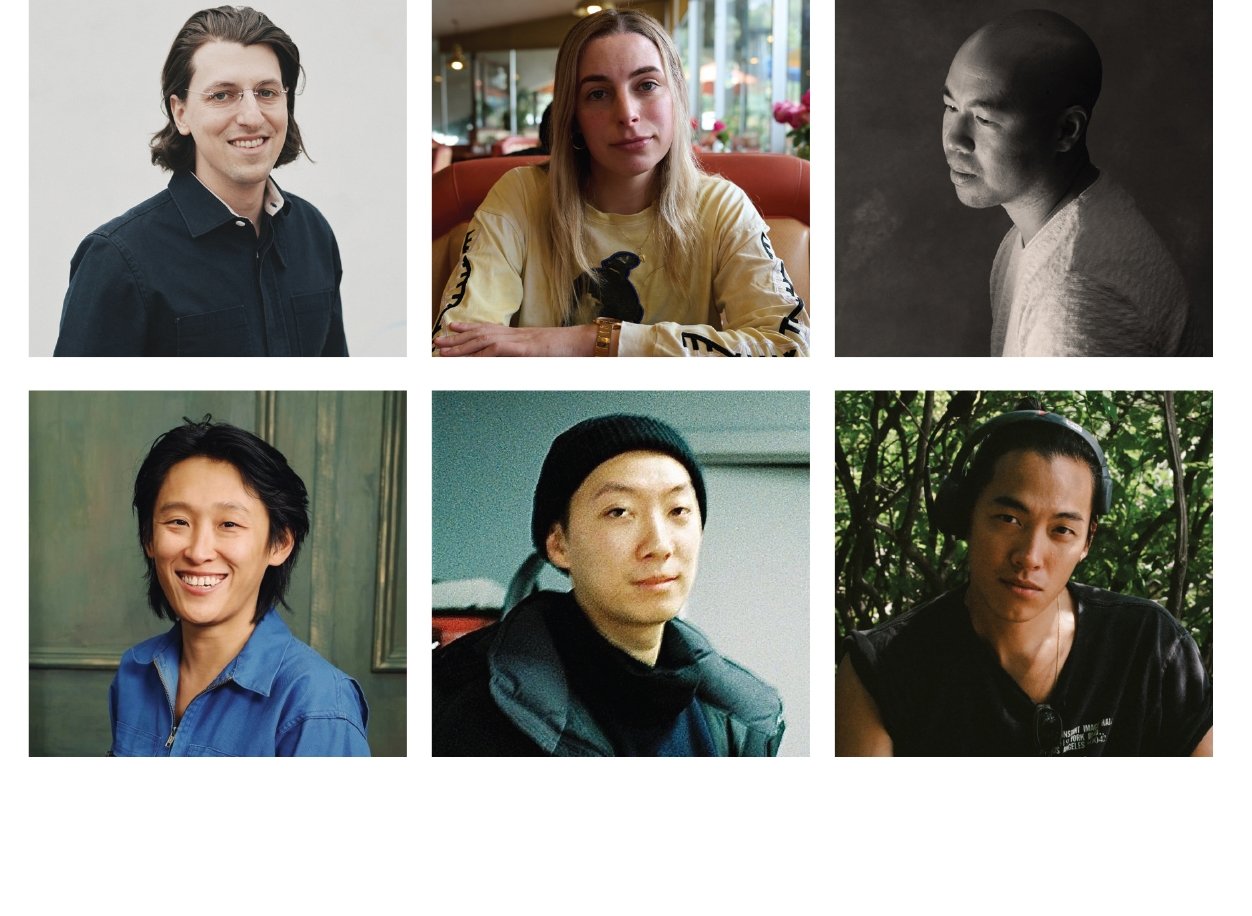
2024 Rising Stars of Cinematography: Six Making the Leap
This marks the eighth year of American Cinematographer’s annual roster of emerging directors of photography.
Six impressive talents have been chosen this year by a blue-ribbon committee of ASC members to join the ranks of AC’s Rising Stars of Cinematography: Bill Kirstein, Ava Benjamin Shorr, Paul Yee, Jo Jo Lam, Xiaolong Liu and Eric Yue. All have shown versatility and creativity in their work, as well as marked dedication to the art and craft of cinematography. AC shares their stories here.
Bill Kirstein
From an early age, Kirstein was exposed to classic cinema. His babysitter showed him Buster Keaton films when he was 12, providing memories Kirstein says are “very deep in my DNA.” Itching for a chance to try his own hand at filmmaking, he “found a VHS shed at a summer camp and made a movie with friends in the woods, and I completely fell in love with the process.” His career path was cemented.
Kirstein attended Wesleyan University, where he earned a Film Studies degree. Since he had previous expertise shooting 16mm film, before many of his peers, he was picked by other students to shoot numerous thesis projects. Kirstein emphasizes how much he learned from this experience. In particular, he “loved being part of a team of creative individuals.”
“Béla Tarr and The Fifth Element are my two sides.”
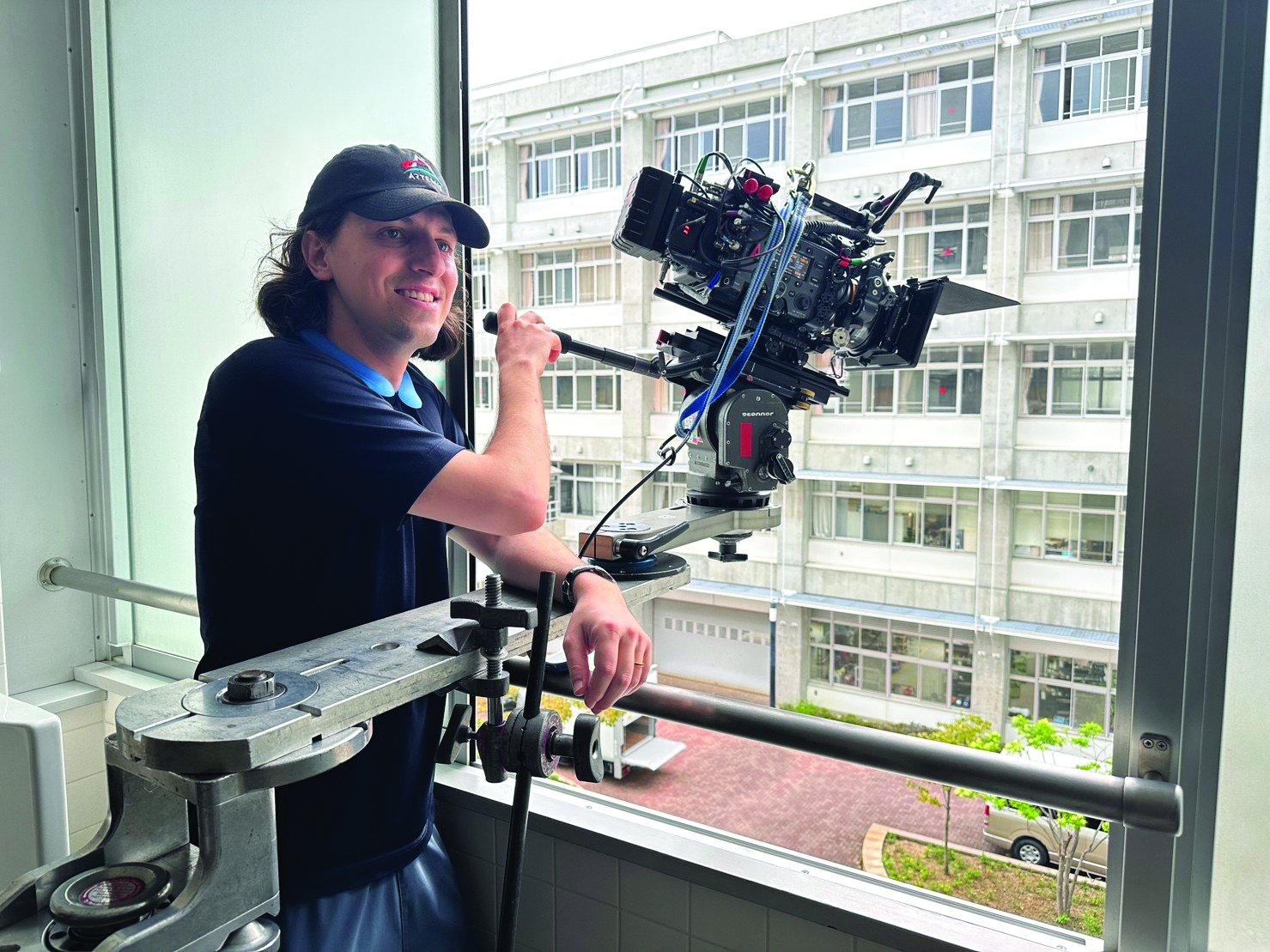
After college, Kirstein secured a position at Beyoncé’s production company, where he worked for three years; he calls that span “a very formative experience. I learned how hard you need to work to make something good, and when to keep going and revising when it isn’t working. The biggest takeaway, which I still apply to everything I do, is to try to make the work better in every moment.”
In 2018, Kirstein shot Justin Timberlake’s music video for “Say Something,” which he considers a turning point in his career. He describes the project as, creatively, “a synthesis of my decade-long interest in long-take cinema. I also love pop. It was a chance to combine those things and create a developing six-minute shot on multiple floors, incorporating the music live.”
Kirstein is inspired by a wide gamut of cinema, from experimental arthouse films to mainstream blockbusters. He wryly notes that “Béla Tarr and The Fifth Element are my two sides.” In addition to his extensive work on music videos (which includes “McCartney: Grand Central” and “Raise a Man” for Alicia Keys), he’s also shot many commercials, documentaries and narrative features. No matter the type of work, Kirstein feels that part of his job is to help find what isn’t in the frame: “I like to work with the director to activate off-screen space, because that’s a big part of cuing the audience’s imagination and helping to keep people captivated.”
The cinematographer says he’s excited by work that can’t be emulated. “There’s a Venn diagram between documentary and narrative film. The space in the middle is where you feel like the combination of the actor’s performance, the camera movement, and the right light creates something that could only be captured one time. It’s so ephemeral, and that’s where I want to be.” Kirstein is particularly proud of his work on the documentary feature Ryuichi Sakamoto | Opus, directed by Neo Sora, which featured Sakamoto’s last performance before his death. The film screened at the Venice International Film Festival and is distributed by Janus Films.
Kirstein’s work on narrative features can be seen in Jessica Dunn Rovinelli’s So Pretty, which premiered at the Berlin International Film Festival, and Mean Girls (2024), directed by Samantha Jayne and Arturo Perez Jr. The cinematographer says one of his ambitions is to “shoot another studio movie. I really like the process of collaboration that occurs in that environment. I’d also like to shoot more independent films like Happyend, a Sundance Labs feature set in near-future Tokyo that I recently completed with Neo Sora in Japan.”
Ava Benjamin Shorr
Shorr found her way to cinematography through directing. During her senior year at University of Colorado Denver, her friend and fellow filmmaking student Chris Osborn asked if she would be interested in co-directing a music video — sparking their collaboration as a directing duo, which lasted through Shorr’s mid-20s. The cinematographer recalls, “Even prior to being a director, I was in love with arthouse cinema. In high school I would go to the foreign-films section of Blockbuster Video, where I would pick out Criterion films — not even knowing what Criterion was. I just loved DVD cover art that intrigued me.”
Eventually, Shorr came to feel unfulfilled by her career path as a director and decided to take the leap into cinematography, adapting her unique perspective as a former director. “I think I approached cinematography as a lover of directors,” she says. I’ve always held directors, and their perspective on the world, in high regard.”
“I want to be working on the best projects — whether they’re art-house, studio or otherwise.”
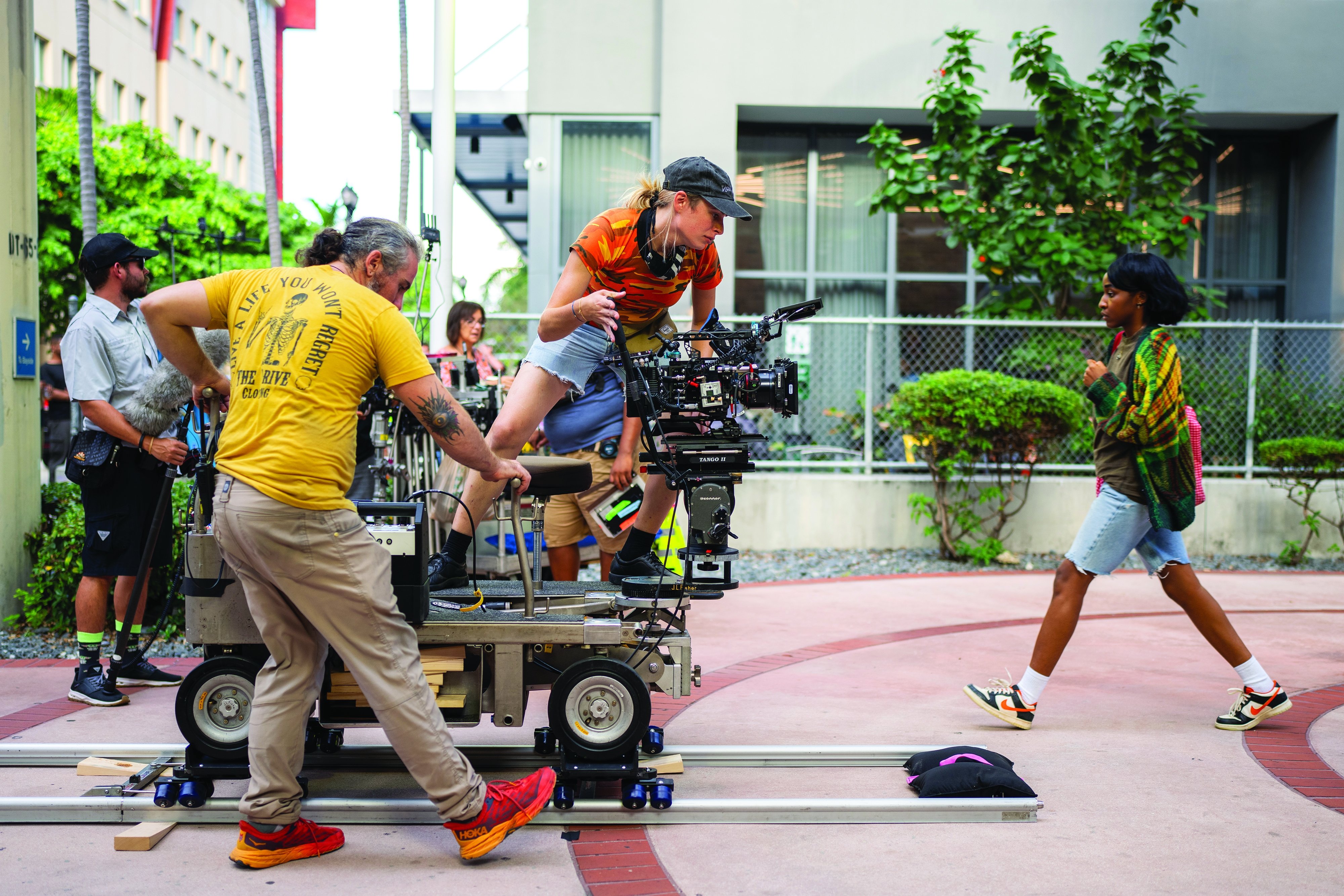
Today, Shorr is one of the hosts of the Cinematography Salon podcast, a space for cinematographers, directors and other industry professionals to share their knowledge and perspectives with the filmmaking community. She is passionate about providing solid information and creating an outlet for industry craftspeople who are not always in the limelight: “I think it’s hard to separate really good knowledge from the noise within online media. Sometimes the people I most admire, who are really shaping cinema, don’t even have Instagram accounts. I’ve been more interested in bringing people onto the podcast who deserve more of a spotlight because they are doing great things.”
As a participant in the ASC Vision Committee’s Mentorship Program, Shorr is partnered as a mentee with ASC member Rachel Morrison, and she readily acknowledges how Morrison has helped with her career. “She stuck her neck out for me,” Shorr says, “and I am so appreciative. She helped me get representation. She recommended me for jobs. I did not go to an expensive grad program. Instead, I put my money into transitioning. I think a lot of trans and queer people understand that money is access. Money lets you keep doing the thing that you want to do. Rachel’s help allowed me to actively continue to pursue what I wanted to do with my life.”
Shorr’s cinematography work ranges from documentaries to narrative, and from short- to long-form projects. She shot the feature documentaries Disclosure (2020), directed by Sam Feder, and Framing Agnes (2022), directed by Chase Joynt, both of which premiered at the Sundance Film Festival. In the narrative realm, she shot the HBO Max series Equal, as well as Bernardo Britto’s 2024 feature Omni Loop, starring Mary-Louise Parker and Ayo Edebiri, which premiered at South by Southwest. She’s particularly proud of her work on Osborn’s short film Gussy, noting, “It’s grainy and underexposed and thin, but I think every frame, from the opening moment, is very honest — it feels like something very specific. That short has helped me get two upcoming narrative feature films.”
Shorr hopes to have the type of careers that Bradford Young, ASC and Chayse Irvin, ASC, CSC have achieved. “I look to those DPs, who started with strong work on smaller, more personal films but have been able to grow beyond that, too. I want to be working on the best projects — whether they’re art-house, studio, or otherwise. So, while representation is important, I hope people will see me for my artistic voice, not just my identity.”
Paul Yee
While studying film at New York University, Yee had a formative experience that shaped his work as a visual artist. “I had a spoken-word teacher at NYU, the artist Karen Finley, who really challenged us to put ourselves into our art. I am an introvert, so at first it was incredibly difficult for me to perform personal work in front of an audience, but, ultimately, I found it incredibly gratifying. It’s something I’ve tried to keep in mind with my work — that it often feels uncomfortable to open yourself up and be personal, but the product is often stronger and more resonant if you do.”
After graduating, Yee worked his way up through the ranks of the grip and electric departments to become a gaffer in New York’s independent film scene. Eventually, he decided to take an “uncomfortable” leap, buy a video camera, and transition into shooting full-time. His first big break arrived when his former NYU classmate Anna Rose Holmer asked him to shoot her first feature, The Fits, which screened at the Venice Film Festival in 2015.
“It often feels uncomfortable to open yourself up and be personal, but the product is often stronger and more resonant if you do.”
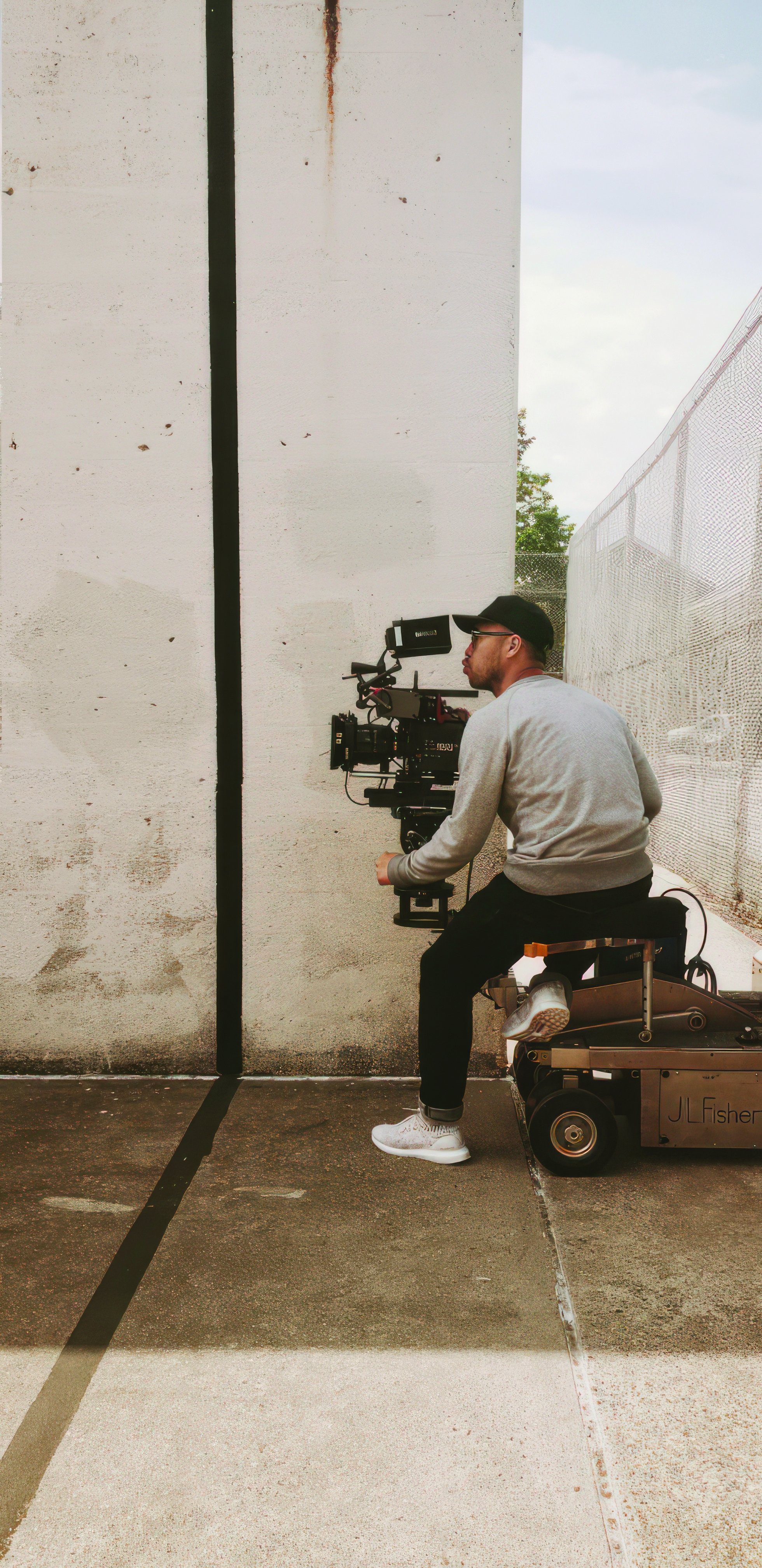
Yee is grateful for what he learned as a lighting technician, as it continues to inform his work as a cinematographer. “I think it’s beneficial for me to have a strong foundation in lighting and to be able to speak that technical language,” he reflects. “Additionally, I have a strong sense of what a small crew is capable of achieving, and that has influenced my location-centric, bottom-up approach to lighting a space.”
After coming up in the industry the way he did, Yee emphasizes the need to have a strong community of peers he can turn to for advice in the realm of cinematography. “I’ve drawn so much support from fellow DPs,” he says. “I’m fortunate to know so many talented cinematographers who are generous with all sorts of advice: technical, personal, and professional. In particular, I feel fortunate to have recently met Amy Vincent, ASC at the Sundance Labs in 2024. She’s been an invaluable source of counsel on how to maintain a healthy work-life balance.”
2023 was a banner year for Yee. HBO released Tina Satter’s Reality, starring Sydney Sweeney, which was nominated for a Gotham Independent Film Award for Best Feature and won a Peabody. Additionally, Yee completed his first studio film, Adele Lim’s Joy Ride, marking a very personal success for him. “As a kid, I loved going to the movie theater, so seeing something I shot get a wide release, with all the posters and marketing, was really special to me,” he says. “My parents went to see it on a Wednesday afternoon with all my aunts and uncles, and there are a few scenes in Taishanese, a dialect that they spoke as children. They were floored to hear that in a real Hollywood movie. I am so grateful to have been part of a project that could give them that experience.”
Jo Jo Lam
Born and raised in Hong Kong, Lam has lived in Australia, the U.K. and France, and is fluent in English, French and Chinese. She is currently based in New York City. While growing up in the melting pot of Hong Kong, she always had the desire to travel and live in different countries. Lam moved to Australia at 16 and discovered the possibility of studying media and film. She enrolled in a film course at night while attending high school during the day — a period she recalls as a “transformative experience.”
Already a cinephile, Lam gradually came to understand her passion for cinematography. She pursued a BA in London before dropping out due to financial hardship, but began working professionally as a 2nd camera assistant.
“I’d love to shoot narrative features that combine my influences coming from Hong Kong and my years living in Europe.”

Along the way, she discovered that “from living in these different places, I was most interested in the potential power of the image to transport an audience through different cultures.” She continues, “I could translate a mood or a space through the visual medium of cinematography and communicate universally.”
Lam freelanced as a cinematographer for several years in Paris before attending the American Film Institute (AFI), where she challenged herself to hone her skills by continually working with different directors and genres.
During her time at AFI, Lam also met Polly Morgan, ASC, BSC who gave the last lecture Lam attended in person before the Covid shutdown. The cinematographer distinctly remembers Morgan telling attendees not to be shy about going for what they wanted — words Lam has taken to heart in her career. Later, Lam was paired with Morgan through the ASC Vision Committee’s mentorship program, and she recently served as 2nd-unit cinematographer on one of Morgan’s commercials.
Lam sees her career as a series of “small breaks, waves and tides. It’s been a cumulative process.” She continues to work internationally in different formats such as narrative films, commercials and music videos, for brands such as Miu Miu and artists like King Princess.
In 2019, Lam was awarded the Kodak Vision Award for Excellence in Cinematography for the 35mm short Ceremony. Since then, she’s shot the award-winning short Here Ends the World We’ve Known (Ici s’achève le monde connu), directed by Anne-Sophie Nanki, which was selected to compete in the 2024 César Awards, and Brian Logvinsky’s Catharsis, which screened at the Tribeca Festival in 2024.
Lam is particularly proud of her work on Georden West’s narrative feature Playland, an ambitious independent film that spans 70 years of history at what would have been one of the oldest gay bars in the country. It premiered at the International Festival of Rotterdam and at Tribeca in 2023.
The cinematographer is enthusiastic about finding a way to bring a personal touch to her work. “How do I bring a specific point of view and sensibility to a film?” is a question she now asks herself before every project.
Looking ahead in her career, Lam says she’s interested in filmmaking that’s both engaged and meaningful: “I’d love to shoot narrative features that combines my influences coming from Hong Kong and my years living in Europe — where the director and I could really play with the form, aesthetics and grammar of cinematic storytelling.”
Lam is currently in production on a feature documentary about New York artist Jean-Michel Basquiat, directed by Quinn Wilson.
Xiaolong Liu
Liu’s life story began, quite literally, at the movies: His father met Liu’s mother at a theater in Dandong, China, where he was working as a film projectionist. When Liu was 6, his family moved to Germany. In order to support his wife and son, Liu’s father abandoned his dream of working in the film industry and opened a restaurant.
As Liu grew up, he was always drawn to a career in the arts. At one point he considered pursuing graphic design but was dissuaded by the amount of time he would have to spend alone in front of a computer. He recalls that his father encouraged him to consider cinematography, “the best role on a film set.”
“I love the challenge and creativity of short-form projects, but my heart is really in features.”
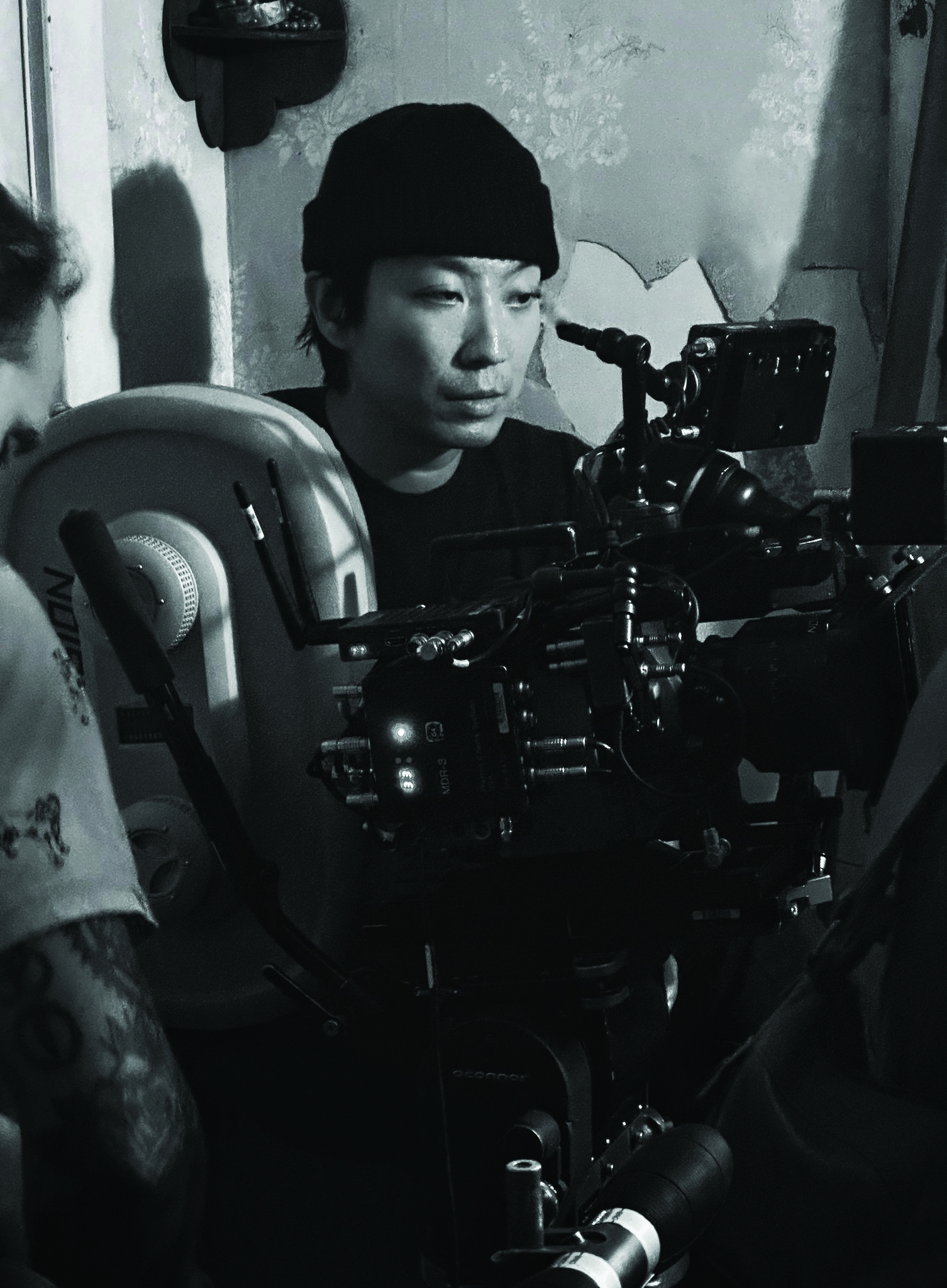
Liu eventually attended a local media-art school in Stuttgart, where he and his family lived. He recalls, “I felt I couldn’t learn everything I needed to know in school. Every day I was going there, I would pass this big film set with condors set up, and I thought to myself, ‘One day, I’ll work there.’ When I decided to drop out of school, I stopped at that big set and knocked on the door of a trailer.” The UPM of the crime series SOKO Stuttgart answered, and Liu asked if they needed any extra help on set. The next morning, he started working as a PA, eventually working his way into the camera department as a camera PA.
When Liu felt he had learned enough to pursue his dream of cinematography, he told his father he wanted to move to London or Berlin to pursue the craft. His father replied, “If you’re going to leave our house, go a bit further than Berlin.” With his family’s assistance, Liu moved to New York, where he found work by joining Facebook groups for NYU and Columbia students, promoting himself as a cinematographer.
While shooting smaller projects as a DP with his Canon 5D, Liu worked as a camera operator, eventually joining Local 600. He also attended the Global Cinematography Institute, where he found mentors in ASC members Yuri Neyman, who headed the school, and Vilmos Zsigmond. Some of the most valuable advice he has carried into his career is that “the quality of the light isn’t as crucial as the position of the light. Also, you need to always listen to the story, using your ears as well as your eyes.”
Liu considers his first big break to be his work on the music video “A Lot” for 21 Savage and J. Cole. He has also shot videos for Beyoncé, The Weeknd and Billie Eilish, among other artists, as well as commercial projects for clients such as Apple, Nike, Mercedes-Benz and Coca-Cola. Liu views his work on music videos as a chance to experiment and “find new tools that one day I can use on a feature film.”
For three years in a row, beginning in 2020, he earned Camerimage nominations for Best Cinematography in a Music Video, recognizing his work on “Joke Ting” for GoldLink and “Save Your Tears“ and “Out of Time” for The Weeknd.
“I love the challenge and creativity of short-form projects,” he says, “but my heart is really in features. Long-form gives you the opportunity to really transfer emotions to the screen and explore world-building with fewer limitations. It allows viewers more time to process and connect with the story, and I feel that I need more than 10 minutes to communicate a narrative effectively.”
As this issue went to press, Liu was in postproduction on a music video for Kendrick Lamar and the Netflix feature The Uglies, directed by McG.
Eric Yue
Yue has always been a multidisciplinary artist, drawn to painting and drawing before he pursued cinematography. He finds his inspiration in a broad array of sources, citing architecture and other visual media when elaborating on his aesthetic sensibilities.
Raised in an arts track while attending New York public schools, he eventually found his way to film, borrowing VHS tapes from the library and poring over the book 1001 Movies You Must See Before You Die. In 2007, Yue went on to attend film school at New York University, where, he notes, he was among the last students to learn by shooting on film with traditional postproduction processes. During his time at NYU, he spent one year as an intern at Martin Scorsese’s production company, where he was motivated by the dedication to filmmaking that he saw every day. “[Scorsese] truly lives, breathes and sleeps cinema,” he confirms. Overall, Yue prioritizes story above all else: “The image isn’t just about the aesthetics and how a project looks — it’s how the whole thing is constructed from a big-picture point of view.”
“The projects that excite me are the ones where I’m working with a director who’s interested in pushing the medium in some way.”
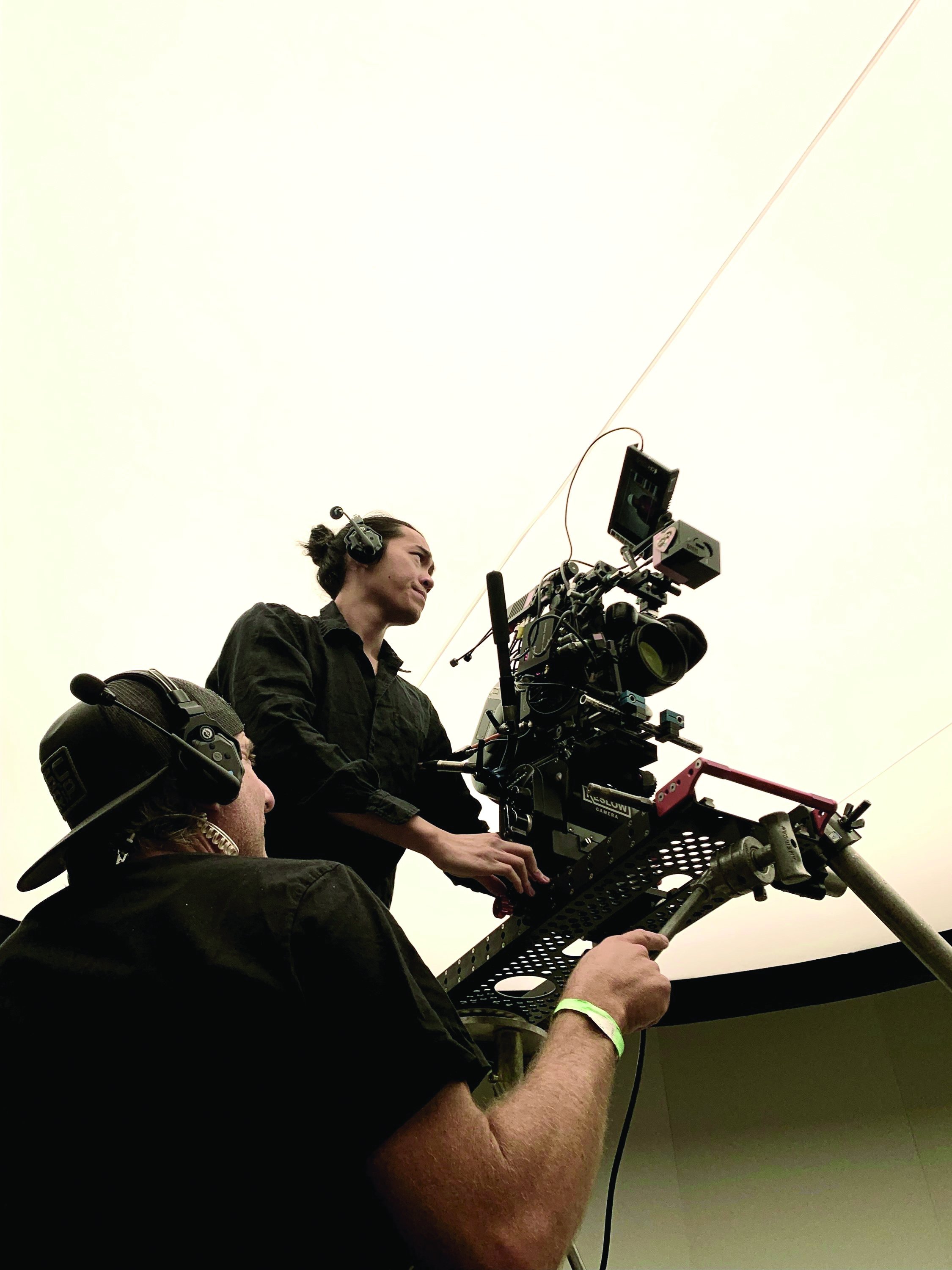
After graduating from NYU in 2011, he spent several years working as both a director and cinematographer. Then, in 2016, Yue took a pause from filmmaking to pursue an MFA in Art. While he was finishing those courses, one of his good friends and collaborators from NYU, director David Raboy, got his first feature greenlit. Yue began shooting the film, The Giant, just a few weeks after graduating with his MFA. Since then, he has worked consistently in film while continuing to flourish in other art spaces as well. In 2019 and 2020, he served as director of photography for the theatrical revival of West Side Story at the Broadway Theater in New York.
Yue feels that his path, while unconventional, has helped him grow as an artist and cinematographer. “Taking a break to study helped me recalibrate and gain a new appreciation for the art form of cinematography,” he says. “When I thought about constructing a film, the shot selection and the grammar, I gained a new perspective on where to come from. I was studying different kinds of history as well. Having some distance [from the job] helped me think about what the role of a cinematographer is, and how that could be pushed to more interesting places than I originally thought it could be.”
The cinematographer’s second feature film, A Thousand and One, directed by A.V. Rockwell, won the Sundance Grand Jury Prize in 2023. His latest feature, I Saw the TV Glow, directed by Jane Schoenbrun, was released earlier this year and generated critical acclaim after playing at Sundance, South by Southwest, and the Berlin International Film Festival.
Yue is enthusiastic about working with more directors whose vision he believes in. “I really want to be able to defend [my collaborations and] the people I work with,” he says. “On week four, when everyone’s tired, I want to know why I’m still in the battle. The projects that excite me are the ones where I’m working with a director who’s interested in pushing the medium in some way. I really want to court that kind of thinking about film.”






